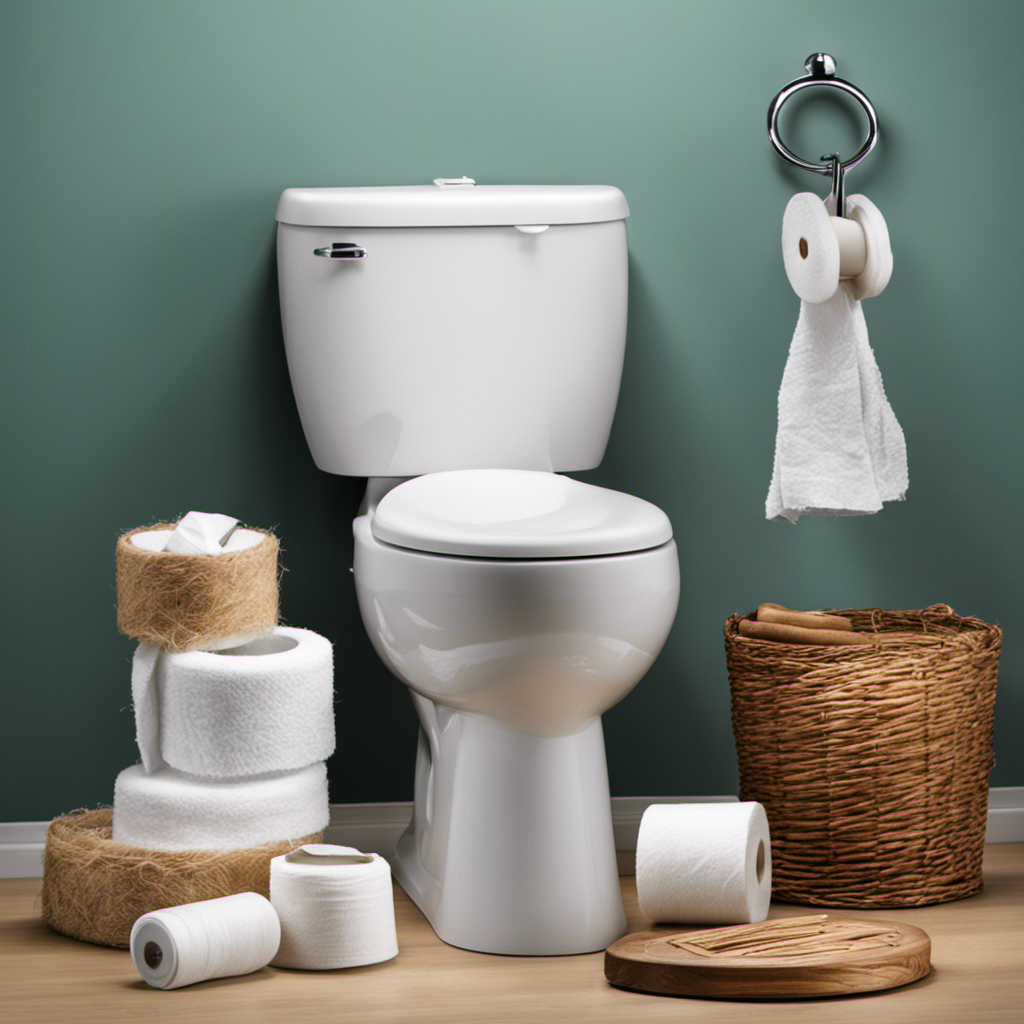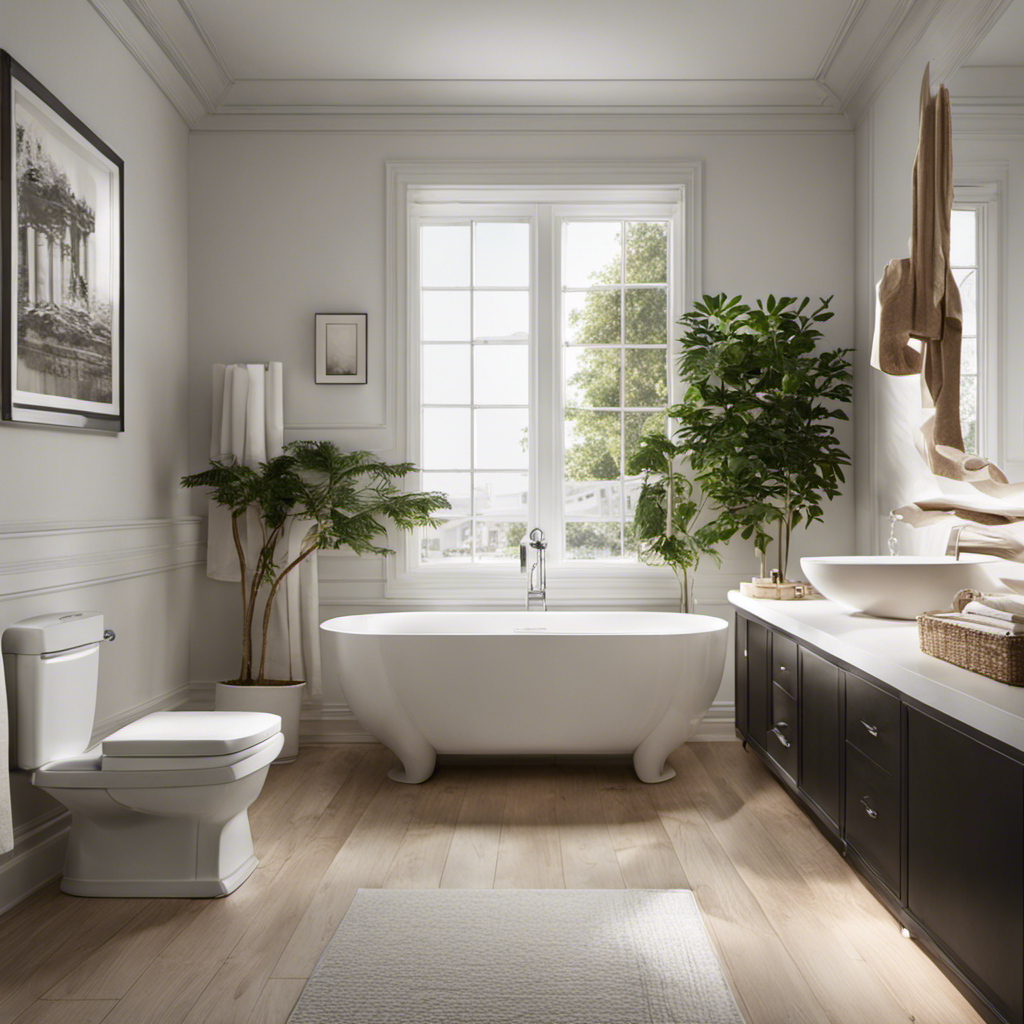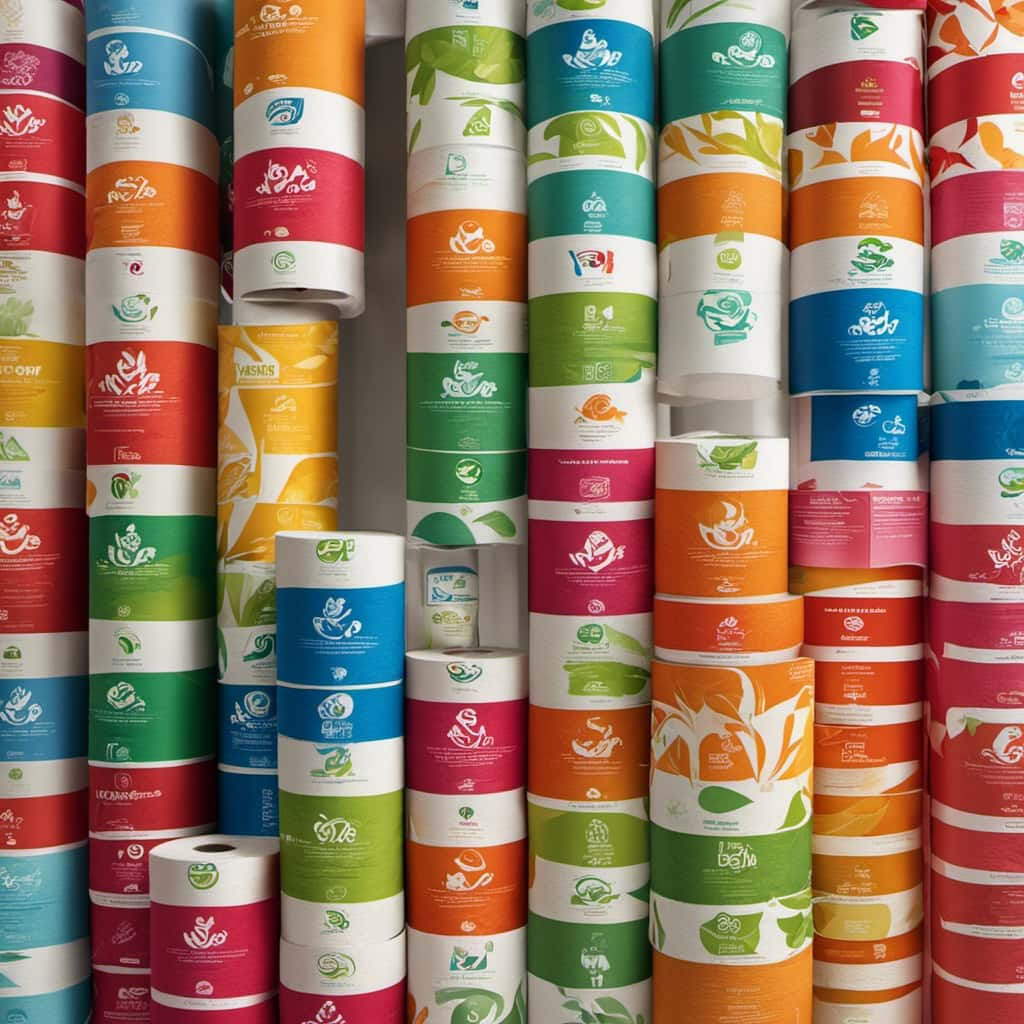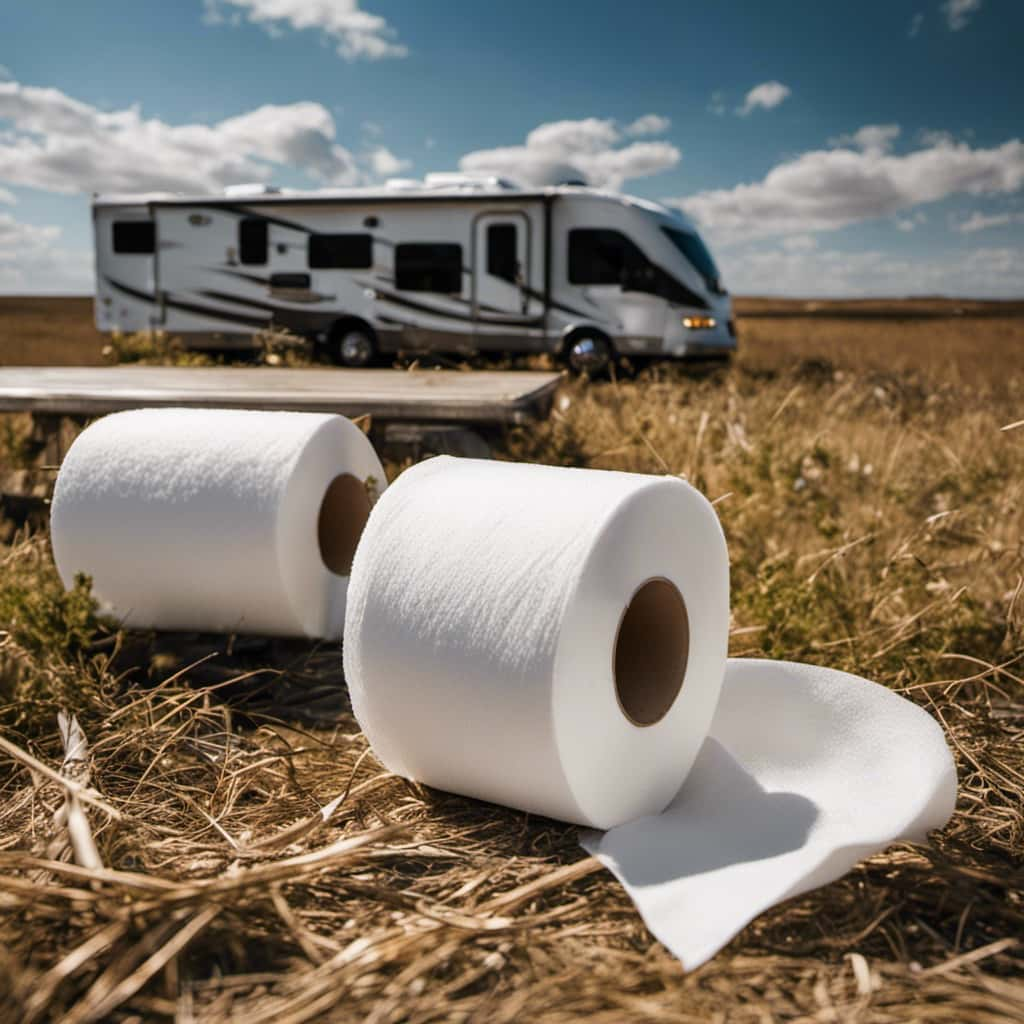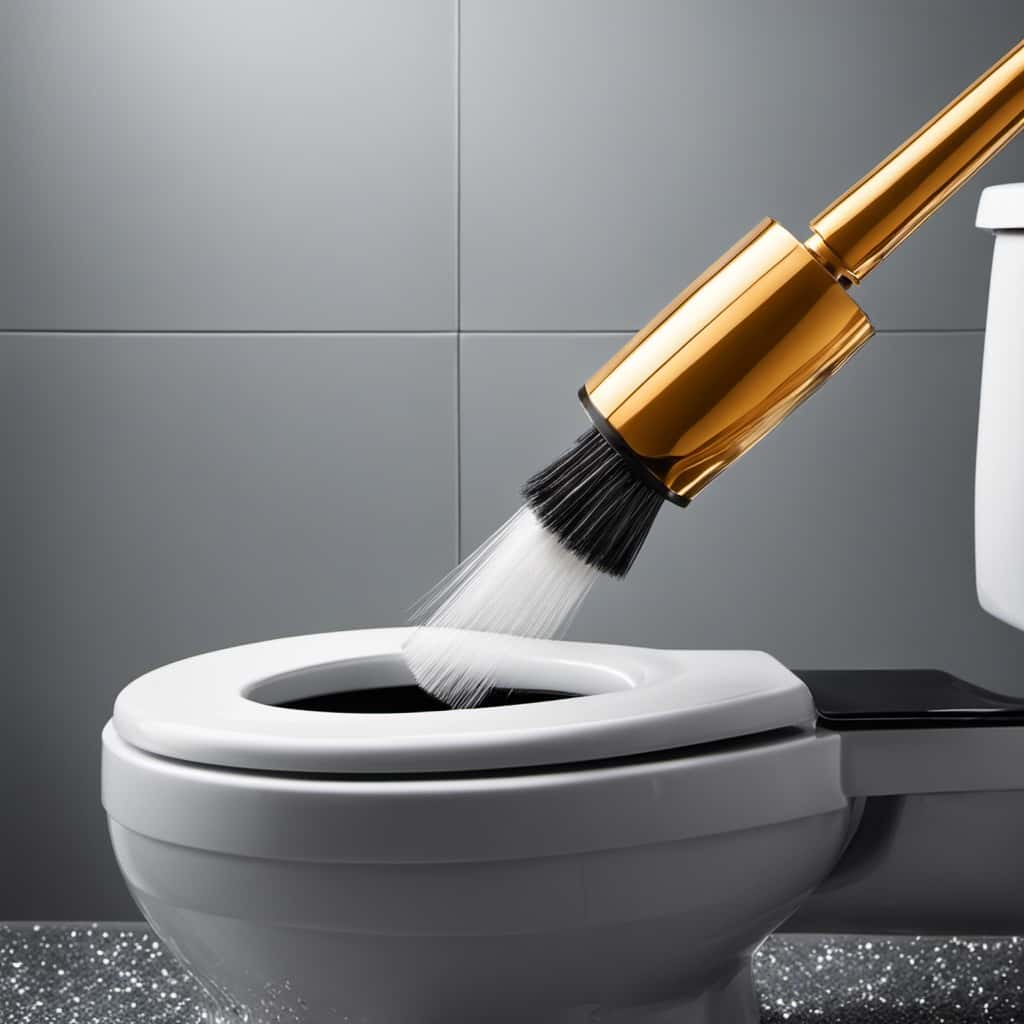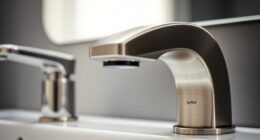I’ve had my fair share of frustrating experiences with toilet clogs, and I’m sure many of you can relate. There’s nothing worse than a blocked toilet, especially when you’re in a hurry.
But fear not, because in this article, we’re going to dive deep into the different types of toilet clogs and how to prevent them. From degradable waste to non-degradable waste, we’ll explore the causes, solutions, and DIY methods to unclog your toilet.
So buckle up, because we’re about to unravel the mysteries of toilet blockages and keep your bathroom running smoothly.
Key Takeaways
- There are two types of toilet clogs: clogs made of degradable waste and clogs made of non-degradable waste.
- Clogs made of degradable waste can clear on their own over time, while clogs made of non-degradable waste require professional treatment.
- DIY methods such as using a plunger, toilet auger, or baking soda and vinegar mix can be used to unclog a toilet.
- To prevent toilet clogs, it is important to avoid throwing non-degradable materials into the toilet and regularly clean the toilet to prevent debris buildup.
Common Causes of Toilet Clogs
One common cause of toilet clogs that I have learned is using too much toilet paper in a single flush. Many people mistakenly believe that toilets can handle large amounts of toilet paper without any issues. However, excessive toilet paper can easily overwhelm the toilet’s drainage system and lead to clogs.
It is important to remember that toilets are designed to handle a certain amount of waste and toilet paper, and exceeding this limit can result in blockages. To prevent toilet clogs, it is essential to use an appropriate amount of toilet paper and to avoid flushing any non-degradable items such as wipes, feminine hygiene products, or paper towels.
Degradable Waste Clogs: Causes and Solutions
When I use too much toilet paper in a single flush, it can cause a clog in the toilet bowl. Toilet paper accumulation is a common issue that can lead to clogs. To prevent this, it is important to use an appropriate amount of toilet paper and avoid excessive flushing.
Additionally, understanding the impact of hard water build-up on toilet drains is crucial. Hard water contains minerals that can accumulate over time and cause blockages. To prevent clogs caused by hard water build-up, regular cleaning and maintenance of the toilet bowl and drains is necessary. This can be done by using cleaning agents specifically designed to dissolve mineral deposits.
In case of a clog, using a plunger or a toilet auger can help clear the blockage.
Non-Degradable Waste Clogs: Identifying and Dealing With Serious Blockages
I can identify non-degradable waste clogs by looking for items like nails and sanitary pads that do not dissolve in the toilet water. When faced with serious clogs caused by non-degradable waste, there are several DIY methods that can be used to address the issue.
Here are four effective methods:
-
Use a plunger: This tool creates pressure and breaks the clog, allowing water to flow freely again.
-
Try a toilet auger or a coat hanger: These tools can reach and break up solid clogs that are causing the blockage.
-
Use a mix of baking soda and vinegar: This combination can break up sturdy clogs by creating a chemical reaction.
-
Pour hot water: This can help clear partial clogs by loosening the debris.
DIY Methods to Unclog a Toilet: Step-by-Step Guide
To unclog a toilet, start by using rubber gloves, eye protection, and a waterproof apron for safety. Once you have the necessary protective gear, you can begin the unclogging process.
First, turn off the water supply using the water shut-off valve to prevent any further spillage. Next, you can use a plunger to create pressure and break the clog. If the clog is solid, you may need to use a toilet auger or a coat hanger to reach and break it.
Alternatively, you can try pouring a mixture of baking soda and vinegar to break sturdy clogs, or use a toilet cleaner to dissolve non-organic clogs. In some cases, pouring hot water into the toilet bowl can help clear partial clogs. Additionally, using liquid soap can dissolve organic debris in the toilet.
These DIY methods can be effective for minor clogs. However, for severe toilet clogs, it is recommended to seek professional solutions from a plumber. They have the expertise and tools to handle more complex clogs and ensure proper unclogging.
When it comes to toilet clog prevention strategies, it is important to avoid throwing non-degradable materials, such as paper towels, plastic wrappers, coffee grounds, wipes, feminine hygiene products, and cigarette butts, into the toilet. These items can cause serious clogs that may require professional treatment.
Regular cleaning and using toilet cleaners preventively every six months can also help prevent debris buildup and keep toilet outlets and pipes free from residual waste and debris.
Using a Plunger: Effective Tool for Clearing Toilet Clogs
Using a plunger is an effective way to clear toilet clogs. When faced with a stubborn clog, it’s important to have alternative tools for clearing toilet clogs. Here are four key points to consider:
-
The role of water pressure: Water pressure plays a crucial role in causing toilet clogs. When the pressure is too low, waste may not be properly flushed, leading to buildup and clogs.
-
Plunger technique: To use a plunger effectively, ensure a good seal by pressing it firmly against the drain hole. Push down and pull up rapidly to create suction and dislodge the clog.
-
Auger or snake tool: If the plunger fails to clear the clog, consider using an auger or snake tool. These tools allow you to reach deeper into the pipes and break up the clog.
-
Chemical drain cleaners: As a last resort, chemical drain cleaners can be used to dissolve stubborn clogs. However, exercise caution and follow the instructions carefully to avoid damaging the pipes.
Toilet Auger and Coat Hanger: Alternative Methods for Stubborn Clogs
When faced with a stubborn clog, it’s important to consider alternative methods such as using a toilet auger or a coat hanger to break up the blockage.
A toilet auger is a tool specifically designed to unclog toilets. It consists of a long, flexible cable with a handle on one end and a corkscrew-like tip on the other. To use a toilet auger, insert the cable into the toilet bowl and rotate the handle clockwise. This will help break up the clog and allow it to be flushed away. It’s important to properly maintain your toilet auger by cleaning it after each use and storing it in a dry place.
Another alternative method is using a coat hanger. Straighten out the coat hanger and use it to gently push and break up the clog. However, be careful not to scratch the porcelain of the toilet bowl.
Remember to always wear protective gloves and goggles when attempting to unclog a toilet using these methods.
Baking Soda and Vinegar: Natural Remedies for Breaking Clogs
I can break up stubborn clogs in my toilet by using a combination of baking soda and vinegar. This natural remedy is a popular and effective method for unclogging toilets.
Here are four reasons why it’s a great alternative to chemical drain cleaners:
-
Environmentally friendly: Baking soda and vinegar are non-toxic and safe for the environment, unlike chemical drain cleaners that can harm aquatic life and pollute water sources.
-
Cost-effective: Baking soda and vinegar are inexpensive household items that can be easily found in most kitchens, making them a budget-friendly option compared to expensive chemical drain cleaners.
-
Gentle on pipes: Chemical drain cleaners can be harsh and corrosive, potentially damaging your pipes over time. Baking soda and vinegar, on the other hand, are gentle and won’t cause any harm to your plumbing system.
-
Versatile: Baking soda and vinegar can also be used for various other cleaning tasks around the house, making them a versatile and multipurpose solution for unclogging toilets.
When it comes to breaking toilet clogs, alternatives to baking soda and vinegar include using a plunger, a toilet auger, or calling a professional plumber for more stubborn clogs. It’s important to weigh the pros and cons of using chemical drain cleaners before resorting to them, as they can be harmful to both your health and the environment.
Toilet Cleaners: Dissolving Non-Organic Clogs
Pouring a toilet cleaner into the bowl can effectively dissolve non-organic clogs. However, if you’re looking for toilet cleaner alternatives that are more eco-friendly, there are a few options to consider.
One alternative is using a mixture of baking soda and vinegar. This combination creates a chemical reaction that can break down clogs without the use of harsh chemicals. Simply pour the baking soda into the toilet bowl, followed by the vinegar, and let it sit for a while before flushing.
Another eco-friendly method is using hot water. Boil a pot of water and carefully pour it into the toilet bowl. The heat can help break down the clog and clear the blockage.
Hot Water: Quick Solution for Partial Clogs
Using hot water is a quick and effective solution for clearing partial clogs in the toilet. Here are four reasons why hot water is a great alternative solution to chemical cleaners:
-
Safety: Hot water is a safer option compared to chemical cleaners, which can be toxic and harmful to your health if not used properly. Hot water does not produce any fumes or chemical reactions that can be dangerous.
-
Cost-effective: Hot water is readily available in most households, making it a cost-effective solution. Chemical cleaners can be expensive and may require multiple applications to fully clear a clog.
-
Environmentally friendly: Hot water does not contain any harsh chemicals that can harm the environment. Chemical cleaners, on the other hand, can contribute to water pollution and have negative effects on aquatic life.
-
Efficiency: Hot water can quickly dissolve and break down organic matter, such as toilet paper and waste, that may be causing a partial clog. Chemical cleaners may take longer to work and may not be as effective on certain types of clogs.
Liquid Soap: Dissolving Organic Debris in the Toilet
When dealing with organic debris in the toilet, liquid soap is an effective solution for dissolving the buildup. Liquid soap has proven to be highly effective in unclogging toilets by breaking down and dissolving organic waste.
Compared to other toilet cleaners, liquid soap has the advantage of being able to penetrate deep into the clog and effectively dissolve the debris. It works by breaking down the organic matter and making it easier to flush away.
Additionally, liquid soap is safe to use and does not contain harsh chemicals that may damage your toilet or plumbing system.
It is important to note that while liquid soap is effective for organic debris, it may not be as effective for non-organic clogs caused by items like sanitary pads or foreign objects. In such cases, it is recommended to seek professional assistance or use specialized tools for unclogging.
Preventing Toilet Clogs: Tips and Strategies to Maintain a Clear Toilet
In my experience, I’ve learned that preventing toilet clogs is crucial for maintaining a clear and functional toilet. Regular maintenance plays a significant role in preventing clogs and ensuring the smooth operation of your toilet. Here are a few essential tips and strategies to help you prevent toilet clogs:
-
Importance of Regular Maintenance:
- Regularly clean your toilet to prevent debris buildup, such as hair, limescale, and hard water deposits.
- Use toilet cleaners preventively every six months to keep the outlets and pipes free from residual waste and debris.
- Inspect and maintain your toilet’s flushing system, including the flapper, fill valve, and flush handle, to ensure proper functionality.
-
Properly Dispose of Non-Degradable Waste:
- Avoid throwing non-degradable materials, such as paper towels, plastic wrappers, coffee grounds, wipes, feminine hygiene products, and cigarette butts, into the toilet.
- Dispose of these non-degradable items in proper waste bins or recycling facilities to prevent clogs in your toilet and sewer system.
Frequently Asked Questions
Are There Any Specific Types of Toilet Paper That Are More Likely to Cause Clogs?
Yes, there are specific types of toilet paper that are more likely to cause clogs. Thick or quilted toilet paper can be harder to dissolve, increasing the risk of clogs. Alternatives like bamboo or recycled toilet paper are more eco-friendly and easier to break down.
Can Using Too Much Water When Flushing Contribute to Toilet Clogs?
Using too much water when flushing can contribute to toilet clogs. It can cause the water level to rise, leading to feces accumulation. Flushing large objects can also block the toilet, requiring professional treatment.
How Can You Tell if a Clog Is Made of Degradable or Non-Degradable Waste?
To differentiate between degradable and non-degradable toilet clogs, look for signs like quick dissolving and clearing for degradable waste, and the need for professional intervention for non-degradable waste. Prevent clogs by avoiding non-degradable items and practicing regular cleaning.
Are There Any DIY Methods That Should Be Avoided When Trying to Unclog a Toilet?
When it comes to unclogging a toilet, there are DIY methods that should be avoided. Common mistakes include using harsh chemicals, excessive force with a plunger, or attempting to disassemble the toilet without proper knowledge or tools.
Are There Any Natural Remedies That Can Be Used to Prevent Toilet Clogs?
Yes, there are natural remedies that can prevent toilet clogs. One effective method is using a combination of baking soda and vinegar to break down debris and prevent blockages.
Conclusion
In conclusion, understanding the different types of toilet clogs and how to prevent them is crucial for maintaining a clear and functional toilet. By identifying whether a clog is made of degradable or non-degradable waste, appropriate methods can be used to address the issue effectively.
DIY methods such as using a plunger, toilet cleaners, hot water, and liquid soap can be used to unclog toilets. Additionally, regular cleaning and avoiding the disposal of non-degradable materials in the toilet are essential preventive measures.
So, why wait for a messy clog when you can take these simple steps to keep your toilet running smoothly?
